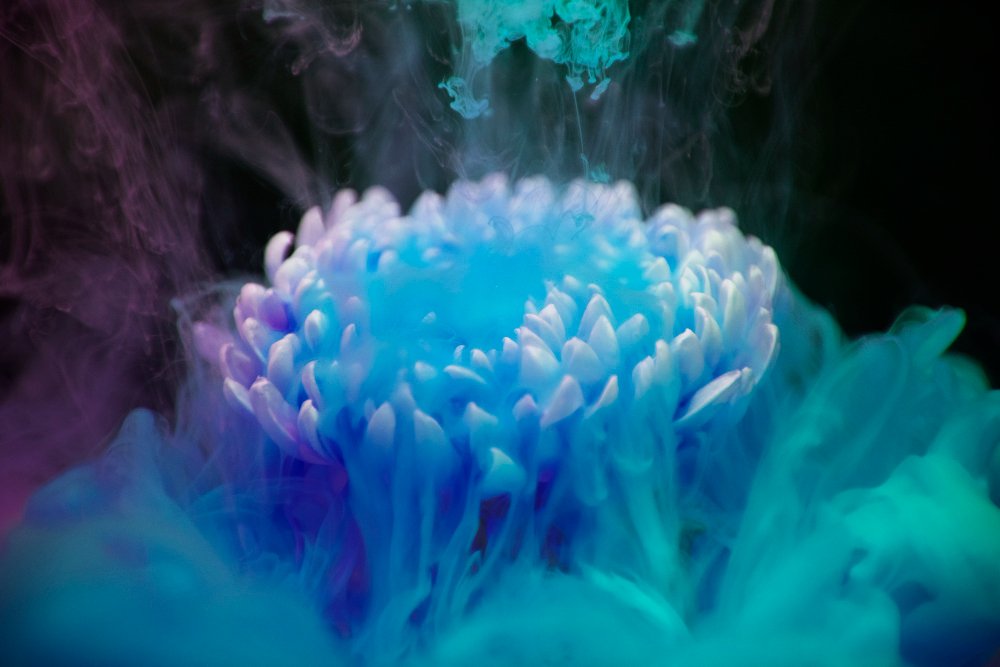“When you achieve clarity in your dreams, you achieve clarity in your life.”
(Tenzin Wangyal Rinpoche)
Contents
- Lucidity: A Gateway to Awareness
- Plants That Help Achieve Lucid Dreams
- What My Personal Experience Reveals
- Documenting and Further Work with Lucid Dreams
Lucidity: A Gateway to Awareness
Lucidity is a word derived from Latin, its root indicating the meaning “bathed in light.” It signifies a state of clear awareness. The etymology of the word lucidity explains that it is “a presumed capacity to perceive the truth directly and instantaneously” (Merriam-Webster, 2024). The state of conscious dreaming refers to a condition in which the dreamer realizes his presence in the state of dreaming.
By becoming aware of oneself in a dream, one can enrich their life with new experiences and enhance the waking state. This can become a practice that provides insight into the nature of the mind. What is created and experienced during dreams can be used for self-development—for instance, learning new skills, interacting with inner personas, or resolving internal conflicts.
Ultimately, the practice of lucid dreaming can deepen self-awareness and open up new possibilities, both in dreams and in waking life.
In ancient texts, the state of lucid dreaming was described as a vivid vision and pure awareness, accessible through meditative practices. Such practices, linked to dream yoga in Tibetan tradition, as well as Yoga Nidra (“yoga of sleep”) in Indian culture, Mesoamerican traditions (associated with shamanism and plant use), and African culture, have been known for centuries.
To describe conscious dreaming, Dutch psychiatrist Frederik van Eeden coined the term lucid dream in 1913. This practice has been studied both from a scientific and practical perspective since then, as interest has grown.
Achieving this state requires preparation. One particularly fascinating aspect is the use of plants that help enhance awareness and improve dream quality. Ethnomedical traditions across different cultures have utilized plants to stimulate conscious dream states. As noted in ethnopharmacology:
“The use of plant preparations in order to produce or to enhance dreams of a divinatory nature constitutes an ethnopharmacological category that can be called ‘oneiromancy’ and which justifies rigorous neuropharmacological research.”
Every region has its own medicinal herbs that are believed to have an effect on dreaming potential.

Plants That Help Achieve Lucid Dreams
Plants have been known to serve as guides in dreams, fulfilling a divinatory role. Depending on cultural traditions and individual preferences, these plants may be smoked, brewed into teas, or placed near or under a pillow. The form in which these plants are used often varies across cultures. While a comprehensive list of dream-inducing plants would be extensive, this article highlights some of the most accessible and well-known plants that can be incorporated into your practice:
- Calea zacatechichi. Native to the wild regions stretching from southern Mexico to northern Costa Rica, Calea zacatechichi is known for its psychoactive properties. Extracts from its leaves enhance dream vividness, promote lucid dreaming, and improve dream recall. Studies suggest these effects may be linked to the modulation of GABAA receptor activity by the phenylpropanoids found in the leaves. Traditionally used by the Chontal Indians of Mexico for divinatory dreams, Calea zacatechichi has been shown to increase hypnagogic imagery and light sleep stages. While low doses enhance dream recall, higher doses may cause side effects such as salivation, ataxia, and vomiting. The herb has a distinctive bitter taste.
- Bobinsana. This Latin American plant is celebrated for its relaxing properties and its ability to enhance the vividness of dreams. Bobinsana is deeply rooted in Amazonian traditions, where it is often used in spiritual practices.
- Guayusa. Hailing from the Amazonian region, the leaves of the guayusa plant are known to increase dream awareness and deepen connections with the subconscious.
- Artemisia (Mugwort). A plant with a long history in European traditions, Artemisia has been used to enhance dream vividness and inspire intuitive insights.
- Blue Lotus. Popular in Africa and Asia, Blue Lotus is known to promote meditative states and facilitate gentle entry into lucid dreams.
- Shankhpushpi. An Indian herb, Shankhpushpi is prized for improving sleep quality and fostering mental clarity.
- Brugmansia spp. Used in certain cultures for inducing prophetic dreams, Brugmansia holds a unique place among traditional dream-enhancing plants.
- Pulsatílla pátens (Son-Trava). In folklore, this flower, placed under a pillow, was believed to induce prophetic dreams. In spring, young women would gather the flower to dream of their future spouse.
- Verbena Officinalis. Known for its sleep-enhancing properties, Verbena officinalis contains active components like hastatoside and verbenalin, which promote restful sleep.
- Silene Capensis. Referred to as the “African Dream Root,” this plant is traditionally used by the Xhosa people of South Africa to stimulate vivid and meaningful dreams.
- Entada Rheedii. Commonly known as the “African Dream Bean,” its seeds are utilized in African traditional medicine to enhance lucid dreaming experiences.
- Heimia Salicifolia. Often referred to as “Sinicuichi,” this plant is known for altering perception and improving dream recall. Some users describe its effects as inducing “sun-dreaming.”
Plants can serve as powerful tools for achieving lucid dreams when used thoughtfully and in conjunction with preparatory techniques. Whether smoked, brewed, or placed near your sleeping space, these natural aids can enhance your connection to the dream world, offering insights and guidance. It’s important to approach these practices with respect for the traditions they come from and an awareness of their effects on both body and mind. As you explore these plants, remember that patience, intention, and practice are key to unlocking their full potential in your journey toward lucid dreaming.

What My Personal Experience Reveals
Key Takeaways
- Preparation of the Body and Mind. Light food, meditation, and observation enhance receptivity and awareness.
- Dream Journaling and Analysis. Recording dreams and reflecting on their content helps develop the skill of awareness both in dreams and in waking life.
- Identifying Inconsistencies. Recognizing “inconsistencies” within a dream serves as the key to entering a lucid state.
- Inspiration Before Sleep. Creative or meaningful inspiration prior to sleep can activate a lucid state.
- Meditation and Focus in Waking Life. Practicing meditation and concentration during wakefulness strengthens control over consciousness in dreams.
Achieving a state of lucid dreaming was only possible when my consciousness was in a prepared state and under specific conditions. In addition to experiencing vivid dreams almost every night, it was necessary to prepare both the space and the body. Light, vegetarian food with low salt content and no sugar made the body more receptive while simultaneously bringing awareness into alignment with the body—a connection that cannot be separated.
The vivid dreams were long-lasting, thanks to the practice of journaling and actively reflecting on their content. The habit of exploring the dream space—its locations, characters, and events—helped train the ability to analyze presence, whether in a dream or in waking life.
The way the body feels during the transition from wakefulness to sleep also played a key role. Over time, this sensitivity helped me focus and enter dreams that became increasingly memorable after waking. Concentration developed through years of daily practice, especially during the transition to sleep.
Meditation in silence and mindful observation of life’s events allowed me to better capture thoughts, understand how the mind operates, and identify its direction. Later, this practice revealed discrepancies when transitioning into lucid dreams.
Most often, lucid dreams occurred after spotting “inconsistencies.” For example, I would ask myself how certain things could happen if I was accustomed to being in a different location or if what was happening simply couldn’t occur due to reasons I had focused on during the day.
Once, I entered a lucid dream solely because I had been inspired by a well-crafted video on the topic before going to sleep. The thought lingered in my mind and carried into my dream. This shows how inspired intention can guide you more precisely through consciousness.
The state we transition through when falling asleep becomes defining—it shapes the practice of dreaming itself, whether or not we consciously control it.
Thus, to achieve lucid dreams, it’s essential to create conditions for quality sleep, work on concentration and awareness during the day, and record dreams over an extended period. This establishes a connection with the subconscious. It’s equally important to set a clear intention before sleeping.

Documenting and Further Work with Lucid Dreams
Achieving lucid dreaming is just the first step. It’s important to document your experiences properly and use them for further self-development. You can make use of the following practices:
- Keeping a Dream Journal. Immediately after waking up, write down all the details of the dream, including emotions, actions, and surroundings. This will help deepen control over your dreams.
- Dream Analysis. Study recurring symbols and themes in your dreams to understand the hidden messages of your subconscious.
- Setting Intentions. In your next lucid dream, plan your actions in advance—such as exploring a specific place or asking your subconscious a question.
- Working with Emotions. Use lucid dreams to confront fears or negative emotions, allowing them to be processed and released.
- Creative Expression. Use the ideas and images from your dreams in art, writing, or problem-solving.
Documenting and analyzing lucid dreams helps turn them into a tool for self-development and a source of inspiration for everyday life.
Lucid dreams open doors to new dimensions of awareness and creative expression. Preparation, the use of helpful plants, and a systematic approach to working with lucid dreams not only allow you to explore your inner world but also to expand the boundaries of reality. Allow yourself to experiment and delve deeper into this fascinating process—it may become the key to harmony and self-discovery.



